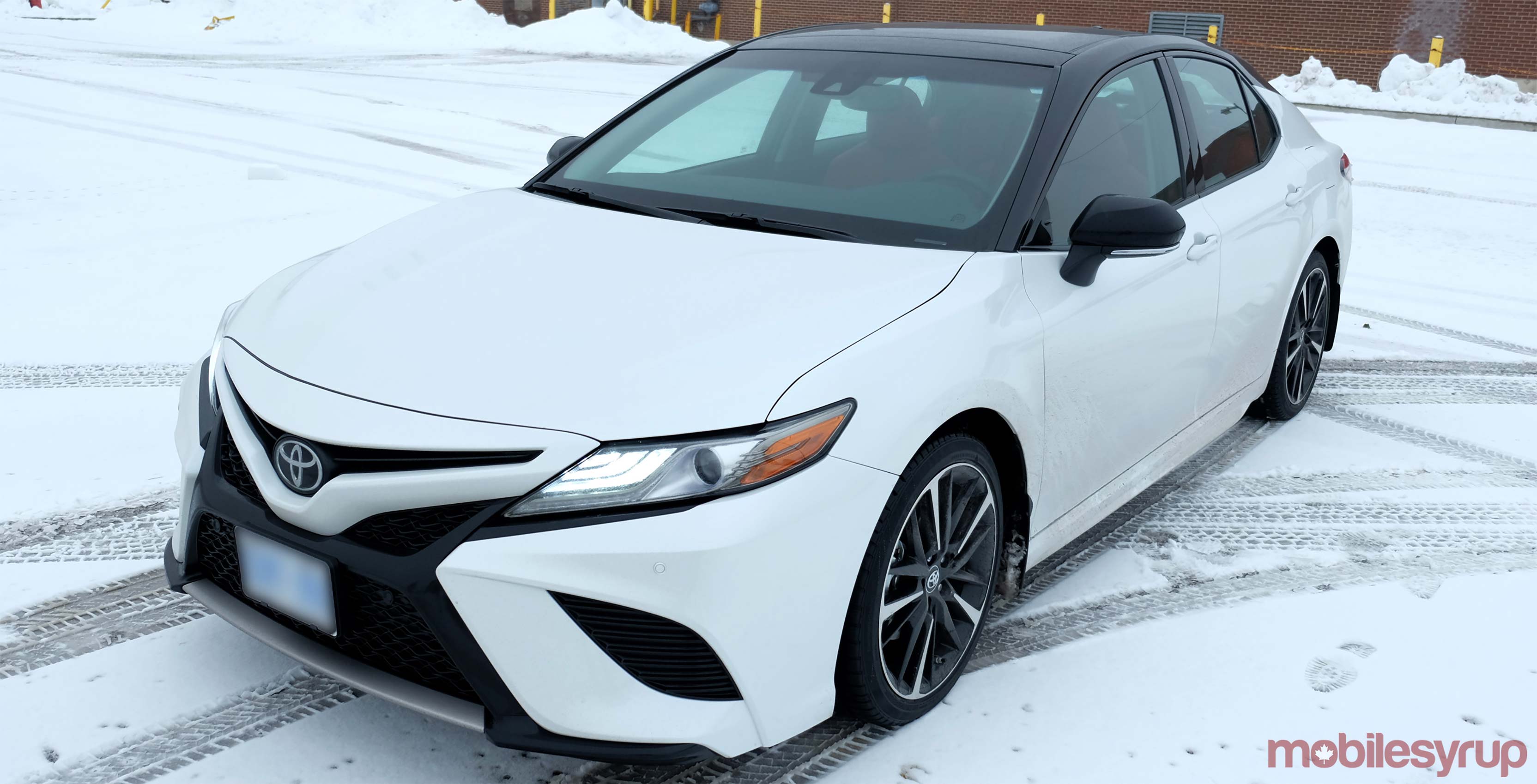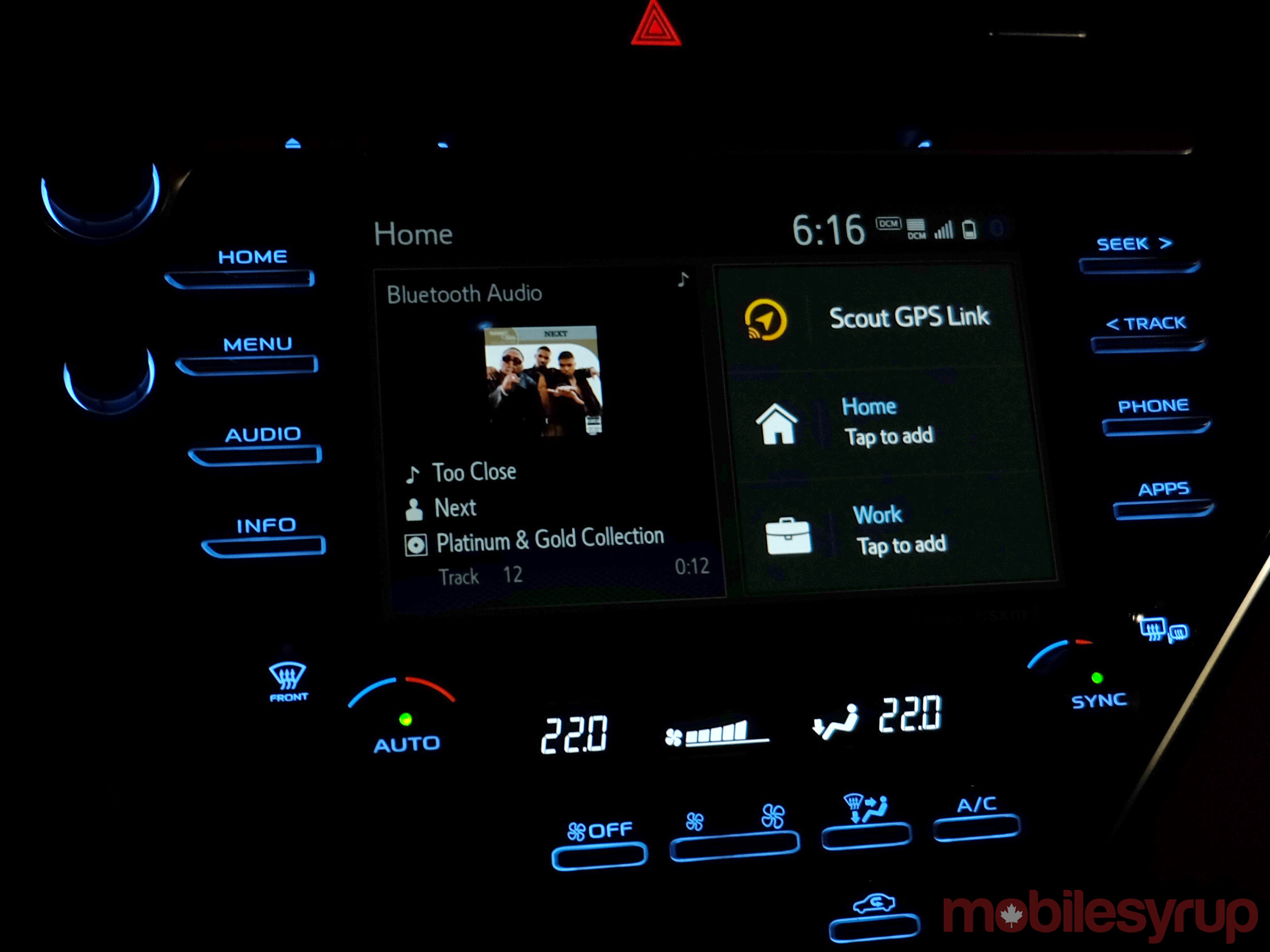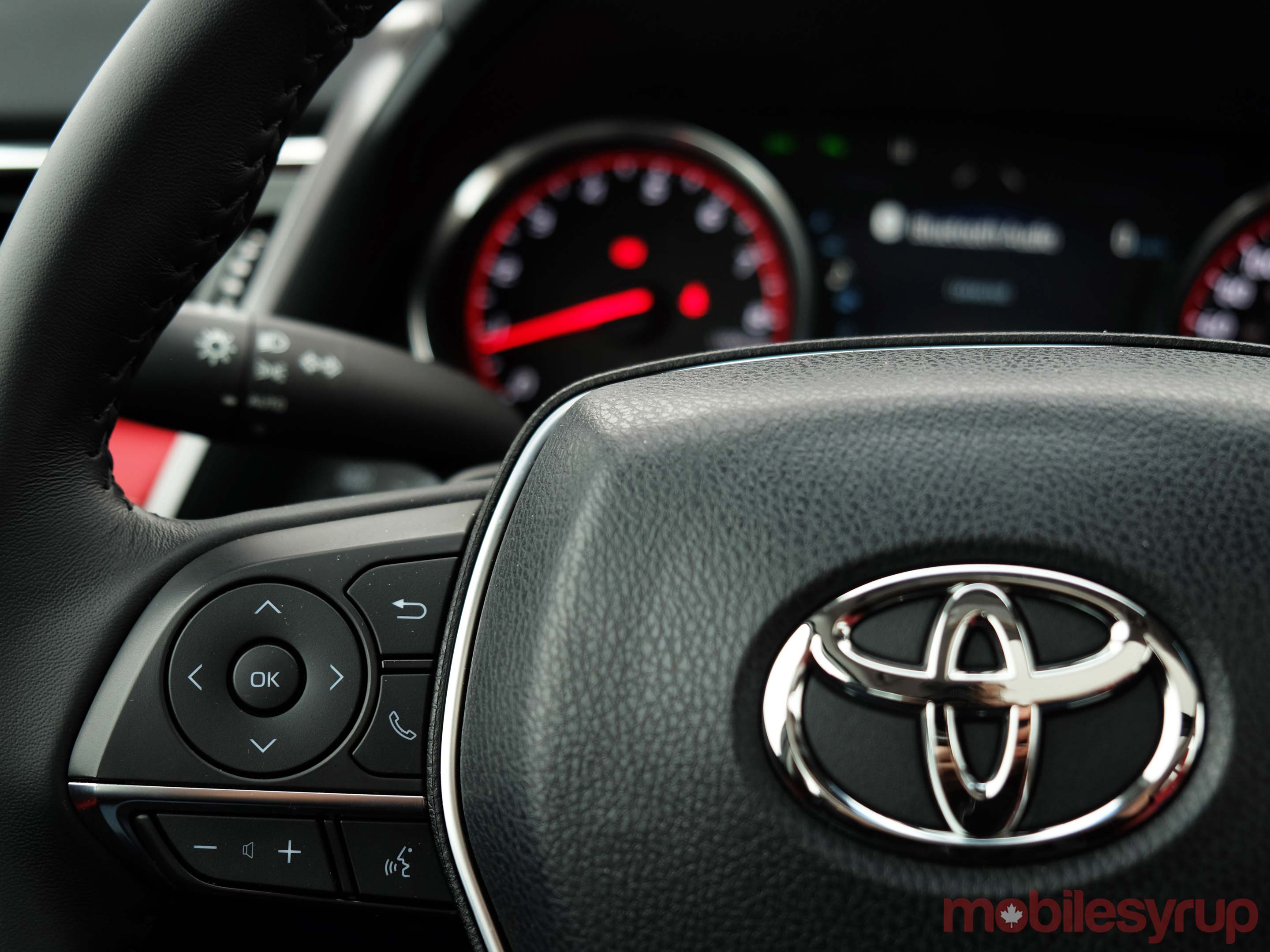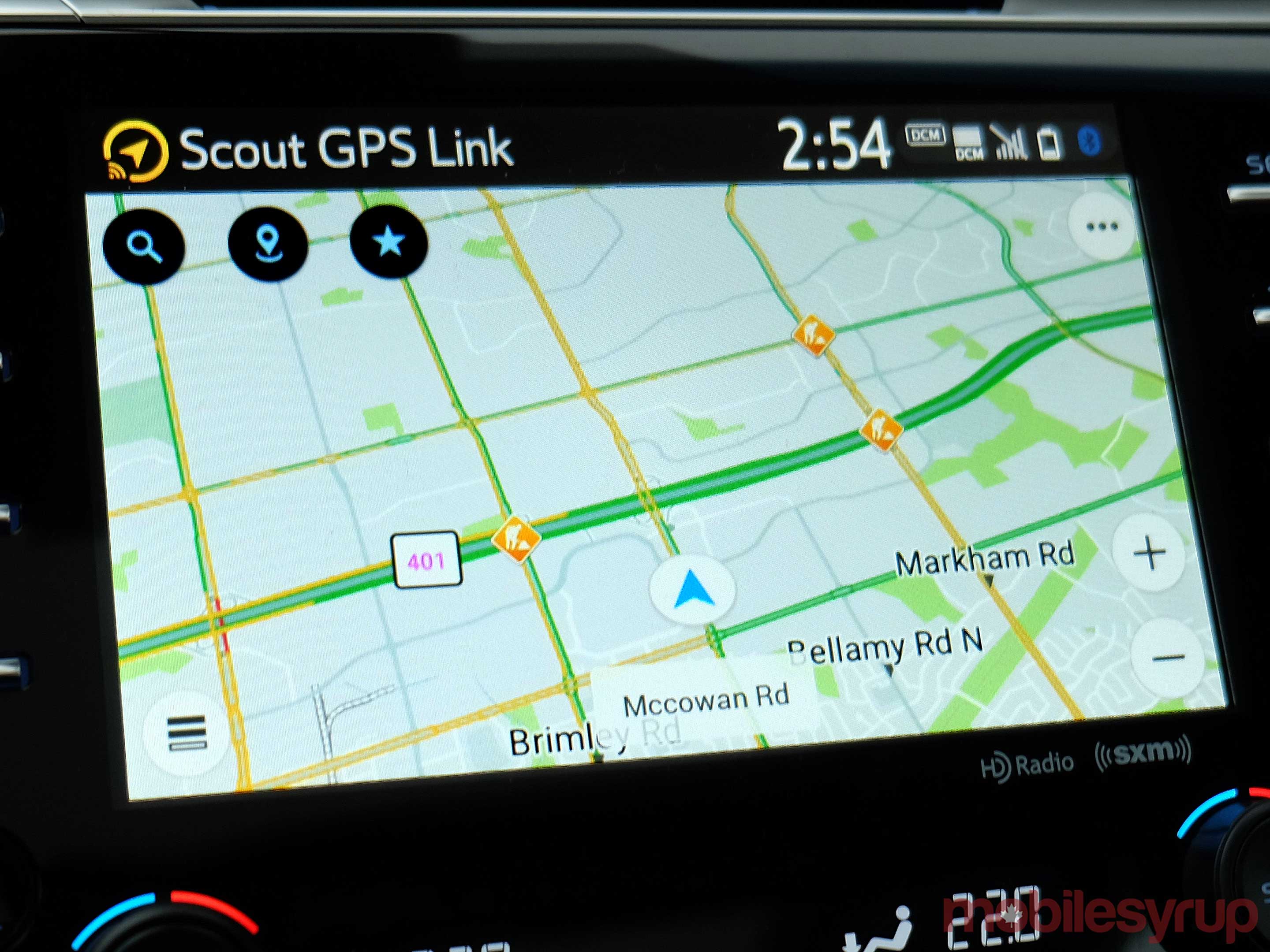
The Pros
- Wireless charging
- Better than what Toyota had before
- Siri and Google Assistant are compatible
The Cons
- No CarPlay or Android Auto
- No in-car Wi-Fi hotspot
- Very limited third-party app integration
Toyota has finally brought its Entune infotainment system to Canada after years operating in other markets, including the United States. Now that it’s crossed the border, does it feel like a big upgrade?
More and more, Toyota (and by extension, Lexus) is something of an island in the world of automotive infotainment. It brought in Entune to some of its 2018 vehicles, but still refuses to support Apple’s CarPlay or Google’s Android Auto projection platforms.
Cutting those out could be viewed as a courageous move (pun intended), except it applies more pressure on Toyota’s engineers and Tier 1 suppliers to come up with a viable alternative. Entune isn’t something new. The 3.0 version is merely an evolution of an existing platform that had plenty of holes to fill.
I got to test drive it in a 2018 Toyota Camry XSE, which is a $37,000 vehicle with all the upgrades inside. Entune 3.0 is essentially standard on all trims, though embedded navigation isn’t on all of them.
The system is not backward-compatible, so if you already own a Toyota model from the last few years, you won’t be able to get it installed.
That gives it a form of exclusivity, but as I’ll demonstrate, it has a long way to go to drive past competitors.
The basics

Entune is largely an app-based platform that works in tandem with a connected smartphone. The phone is necessary to pull in the data required to run apps on the platform itself. The in-car SIM has an exclusive data connection.
I say ‘exclusive’ for the simple reason that the SIM doesn’t do anything else for the driver. It’s easy to install system upgrades over the air, and in my one week of testing, I had to do it three times. That’s a good sign. At least it shows Toyota is trying to improve and tweak what it has.
The problem was I had no idea what the update was changing. The install alone could take several minutes, and no pop-up on the screen appeared to tell me what it was fixing. Was it a security update? A new feature? A basic tweak I wouldn’t have otherwise noticed? I never knew.
I point this out because, being new to the Canadian market, there is a learning curve involved in what Entune and the wider system can do.
In that respect, I would break down Entune and the infotainment system as two equal parts. Entune works within it, yet feels like it operates independently to some degree.
Toyota also packed the Camry with various safety features under its Safety Sense package, though I didn’t focus on those for this review. There are no autonomous driving features included in any 2018 Camry trim.
Connections and layout

Much of what Toyota put in the Camry XSE was standard fare. There is a dedicated USB port for smartphones under the dash beside an Aux-In port. There are two more USB ports with 2.1Amp power inside the centre console. These are only for charging, and do not interact with the system in any way. You also get a 12-volt socket in there as well.
Under the dash, and in front of the gearshift, is a Qi wireless charging pad. The pad is compatible with any phone supporting the standard, including the iPhone X and iPhone 8/8 Plus. I charged an iPhone X with a case on without fail. Other phones worked fine too. The pad doesn’t work as a physical input, meaning the system won’t see it as a device plugged in directly. Some other automakers have done this, but it’s not an option here.
Bluetooth works as expected, with both Siri Eyes Free and Google Assistant available when phones are paired. To avoid cutting off its own voice assistant, Toyota mapped Siri and Google Assistant to the call button on the steering wheel. The voice button always defaults to Toyota’s own. So, when paired, I pressed the call button and Siri or Assistant would pipe up waiting for a command.
I mentioned the in-car SIM’s limitations, and will add that it also doesn’t do in-car Wi-Fi. It’s a passive data connection in the car serving the infotainment system, not any devices brought into the vehicle.
The 8-inch display (some trims have a 7-inch) is clear and bright. While capacitive, its touch sensitivity isn’t like a mobile device. It’s easier to get around by tapping arrows or navigation bars, rather than swiping. Pinch-to-zoom also didn’t work for me.
Physical buttons and dials flank the display, simplifying how to get to shortcuts or basic features, like volume.
Entune apps

Entune’s app integration relies on what is already there, rather than what you have on your phone. There is one exception to that with navigation maps, which I’ll touch on later.
These apps are mostly proprietary, with the exception of Yelp, Slacker and NPR One. I noted the in-car SIM already, which clearly has a data connection to pull in updates over the air, but it doesn’t chip in for Entune. Without using the phone’s data connection, the apps wouldn’t pull in any information.
What’s in the app suite is almost entirely contextual. That’s great in theory, and results weren’t all that bad during my testing. Fuel listed the nearest gas stations. Traffic pointed out obstacles or incidents on the road. Weather showed me a forecast and current conditions. Sports gave me the latest scores from a variety of leagues. Stocks could show me how my portfolio was doing.
In the case of Fuel and Traffic, I could see where their respective locations were on the Scout GPS map. If need be, I could also initiate navigation to the gas station I selected.
They felt a little dated, but these basics apps weren’t that bad. The thing that struck me was that I was getting something visual on the screen when I could simply ask Siri or Google Assistant for some of the same information. If I wanted to know a score, I simply asked for it. Same with weather or traffic. Even the nearest gas station wasn’t hard to find, and I never had to cycle through a menu.
In one sense, Toyota is offering the best of both worlds. Those who want something to actually see can peruse the onscreen list. Other who can get around fine verbally have their phone’s voice assistant do the work.
Adding Yelp is definitely helpful, and it works well in Entune. Given that neither CarPlay or Android Auto have integrated it, this is a rare win for a factory infotainment system.
Scout GPS navigation map

If you’ve never heard of Scout GPS Link, it’s not surprising. This is a dedicated navigation mapping app made for Toyota and Lexus vehicles. It was the only embedded nav option on the Camry XSE, and it ran off my phone.
The app is available for free on iOS and Android. It doesn’t require opening an account, but doing so does make the process of connecting in the car easier. Once registered, in-car connections are almost instant.
Telenav’s OpenStreetMap powers the app’s maps, with a decent enough interface, though not on par with the slick feel of Google Maps or Waze. Strangely, there was no way to send a destination from the phone to the car. This was odd, given the in-car SIM. Instead, I had to start the route on the phone first, which would then pick up once I connected in the car. Not terribly invasive, except I could hear the map’s voice awkwardly give instructions as I was walking in public toward the car.
As for actual performance, there were some inconsistencies. Initially, my iPhone X wouldn’t work when plugged in, even though it did over Bluetooth. I wasn’t able to play music when plugging in a Pixel 2 XL, yet ran Scout GPS Link without a problem.
It attempts to be dynamic by showing construction and certain points of interest on the map. It just lacks the texture and dynamism I’ve become accustomed to with Google Maps and Waze. Even Apple Maps looks considerably better.
Also worth noting is the map won’t work outside Canada. Cross the border into the U.S. and it won’t carry on. Having a backup ready with Google Maps, Waze, TomTom Go or something else, even if it works offline, is the only other option.
Music and calls

Slacker is okay, but it felt like a consolation. Same with NPR One. I’d much rather have TuneIn built-in, with native support for Spotify. That combination would do wonders for Entune, but as is, the system feels like it integrates what was relevant in 2010.
Bluetooth audio streaming was fine, no matter what I played, but I wouldn’t expect any less. I could control playback through the physical buttons and steering wheel, or even moderately control things through voice (more with Assistant than Siri).
What I missed was the integration CarPlay and Android Auto enable. With Toyota’s system, I could never see playlists, or navigate to different streaming music apps. I needed to use my phone to do that, which defeats the purpose of hands-free operation.
Phone calls were pretty flawless, regardless of whether I used Toyota’s system, or the other voice platforms. Texting was initially problematic until I realized that Toyota developed its voice system to be precise. If I simply said, “Send a text to (name),” it would give me a puzzled response. If I said, “Messaging,” it would then ask me who to send it to, with a list of preloaded messages I could send. I was impressed there were 15 to choose from, including common quick ones, like “yes,” “I’m on my way,” and “LOL.”
If I wanted to recite my own message, I could do that instead. In those cases, though, I usually leaned on Siri or Assistant to do the job.
Wrap up
I can understand Toyota’s reluctance to cede some control of its dash to Apple and Google. I’ve already heard feedback from the company expressing concern over how Android Auto pulls in data. But Entune 3.0 doesn’t stand out as an alternative trumping those platforms. They have the kind of integration and flexibility Toyota hasn’t been able to keep up with.
The lack of in-car Wi-Fi can be offset by third-party devices that can do it. Siri and Google Assistant work reasonably well via Bluetooth. That leaves the apps. Comparing what Entune has to the likes of Spotify, Google Play Music, Waze, Google Maps, among others, indicates the divide. Drivers know and understand the apps on CarPlay and Android Auto, which generally leads to a better experience.
Toyota is less a renegade opposing the status quo, and more an established holdout buying time. It’s just not clear how much patience drivers will have when others are driving in unison towards something else.
"I can understand Toyota’s reluctance to cede some control of its dash to Apple and Google"
MobileSyrup may earn a commission from purchases made via our links, which helps fund the journalism we provide free on our website. These links do not influence our editorial content. Support us here.



